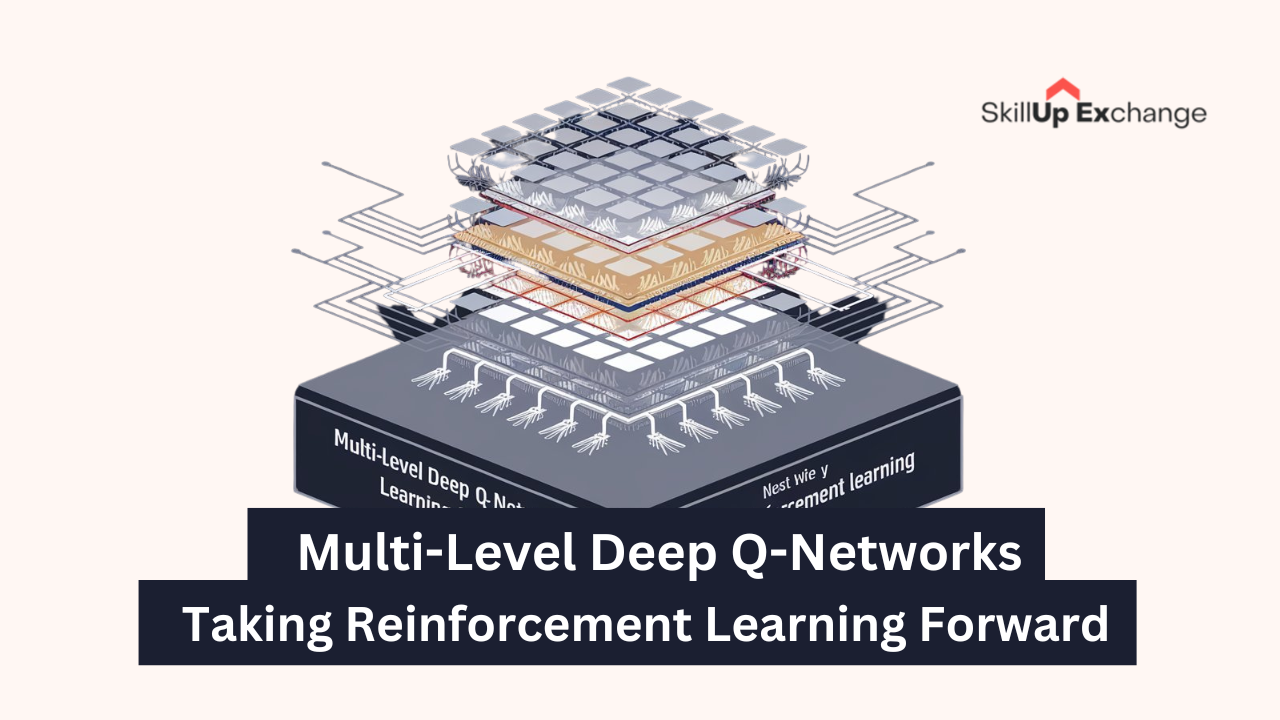ChromaDB: The Future of Vector Databases in AI

Data is the heart of modern AI and, truth be told, its management has become way more crucial than ever. Think about all those daily instances of applications that use AI-from smart assistants to personalized recommendations. In the background, these systems work with sophisticated data structures called vector embeddings which can be described as the ultimate secret sauce for how that AI component can understand and process the information in much the same way as humans do.
But the catch is that these complex data types weren’t really contemplated by more traditional databases. Enter ChromaDB, an open-source vector database designed much like the personalized, specifically tailored filing system for AI data. Be you a developer hacking away at the next revolutionary chatbot or a data scientist fine-tuning a search engine, it provides a simple means of managing AI data sans technical complexity.
In this article, we will check out what makes it tick, from its outstanding features to real-world applications. Of course, we will also compare it to other vector databases to help you decide on which one to use for your AI project. The best news? You don’t need to be a database expert to understand and use it effectively.
Table of Contents
What is ChromaDB?

Chroma Vector Database (ChromaDB) is an open-source vector database designed specifically for managing and retrieving vector embeddings. It plays a pivotal role in AI-driven tasks like semantic search, NLP, image recognition, and various machine learning applications. It enables efficient handling of vector embeddings, optimizing processes where understanding and interpreting large datasets are essential.
Unlike traditional databases that store structured data, vector databases like ChromaDB focus on storing high-dimensional vectors. These vectors are typically generated by ML models to represent data such as words, images, or even complex patterns. Storing and querying these vectors efficiently is crucial for the performance of AI applications that require semantic understanding, such as search engines and recommendation systems.
Key Features of ChromaDB
It stands out among vector databases because of its flexibility, scalability, and performance. Here are its key features:
a. Open Source and Community-Driven
One of the most appealing aspects of ChromaDB is its open-source nature. This allows developers to adapt the system to their specific needs, integrating it into various workflows with ease. Its community-driven model ensures continuous improvements, making it a reliable choice for AI and data science projects of all scales.
b. Scalability
It can handle data at any scale, from small experimental projects to enterprise-level applications. Its scalable architecture makes it a versatile tool, well-suited for handling extensive datasets commonly used in machine learning environments.
c. Performance Optimization
Designed for high-speed vector retrieval, it ensures quick access to stored vectors. This feature is especially important for AI applications that require real-time responses, such as chatbots, search engines, or personalized recommendation systems.
d. Flexible Storage Options
It offers users the flexibility to choose from various underlying storage systems depending on their needs. For smaller, standalone applications, it supports storage with DuckDB, while larger, scalable applications can use ClickHouse for distributed storage and querying.
How ChromaDB Works
At its core, ChromaDB operates by creating collections that store embeddings (vector representations) and associated metadata. Its main functionalities include:
a. Creating a Collection
Similar to tables in relational databases, a collection in ChromaDB is where vector embeddings are stored. Each collection can hold multiple embeddings, making it easy to organize and manage vector data.
b. Adding Documents
When users add text documents to a collection, ChromaDB automatically converts them into embeddings. This process involves utilizing embedding functions to transform raw data into numerical vectors that can be stored and queried efficiently.
c. Querying the Database
One of ChromaDB’s strongest features is its querying capabilities. Users can search for similar documents or vectors by performing queries using either raw text or embeddings. Advanced querying allows for natural language queries to be translated into precise vector searches, making the retrieval process intuitive and efficient.
Technical Aspects of ChromaDB
ChromaDB’s technical prowess lies in its efficient handling of vector data. Below are some of the key technical aspects that make ChromaDB a suitable choice for AI and machine learning tasks:
a. Embedding Functions
Embedding functions are at the heart of ChromaDB’s capabilities. These functions are used to transform complex data (such as text, images, or audio) into vectors that can then be stored and used for similarity searches or other AI-related tasks.
b. API Support
It offers robust API support, which allows developers to interact with the database using popular programming languages like Python and JavaScript. This flexibility ensures that ChromaDB can be integrated into a wide variety of machine learning pipelines and AI systems.
c. In-Memory Storage
It leverages in-memory storage for rapid access and processing of vector data. This approach ensures that data retrieval is fast and efficient, making it particularly useful for applications where speed is critical.
Use Cases for ChromaDB
ChromaDB is designed to meet the needs of a wide range of AI and machine learning applications. Some of the most common use cases include:
a. Semantic Search Engines
It excels in semantic search applications, where it enables the retrieval of information based on the meaning of a query rather than the literal text. By using vector embeddings, it can identify and return relevant results that are semantically similar to the search query, even if they don’t contain the exact keywords.
b. Natural Language Processing
In NLP, ChromaDB plays a crucial role in tasks such as sentiment analysis, language modeling, and document clustering. Its ability to handle large volumes of text data and efficiently retrieve embeddings makes it an ideal tool for these applications.
c. Recommendation Systems
Recommendation systems rely heavily on vector embeddings to suggest relevant products, articles, or services based on user preferences. ChromaDB’s scalability and performance ensure that it can handle the data requirements of large-scale recommendation engines.
d. Machine Learning Model Training
Training machine learning models often requires large datasets and fast retrieval of relevant data. ChromaDB’s ability to store and query vector embeddings efficiently makes it an invaluable tool for data scientists working on model training and fine-tuning.
ChromaDB vs. Other Vector Databases
It is not the only vector database available, but it is one of the most flexible and open-source options. When compared to alternatives like Pinecone and FAISS, each offers unique advantages for specific use cases:
- ChromaDB: Open-source and community-driven, it is ideal for developers who want flexibility and the ability to manage their own infrastructure. ChromaDB shines in applications requiring scalability and ease of use.
- Pinecone: Pinecone is a fully-managed service that focuses on high-performance, real-time vector search. Its enterprise-grade security features make it a preferred choice for large-scale AI deployments in industries like finance or healthcare.
- FAISS: Developed by Facebook AI Research, FAISS is another open-source vector search library optimized for large-scale similarity searches. However, it is more suited for research-based applications and lacks the ease of use provided by ChromaDB’s flexible storage options and API support.
Conclusion
ChromaDB represents a significant leap forward in the world of vector databases, offering a flexible, scalable, and high-performance solution for managing and retrieving vector embeddings. Its open-source nature, community-driven development, and adaptability make it a versatile tool for a wide range of AI applications, from semantic search to natural language processing and recommendation systems.
As AI continues to evolve, the need for efficient, scalable, and robust data storage and retrieval systems will only increase. It is well-positioned to meet these needs, providing developers and data scientists with the tools they need to build the next generation of AI-driven applications.
In summary, it is more than just a database; it is a bridge between raw data and sophisticated AI systems. Its role in modern AI development cannot be overstated, and as its community continues to grow, we can expect ChromaDB to play an even greater role in shaping the future of data management in AI.





